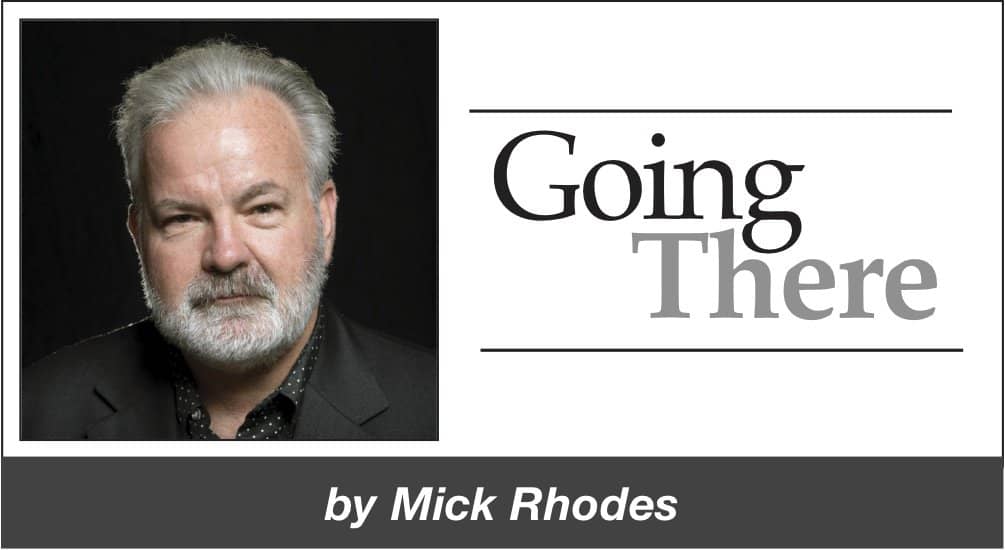Going There: Warning labels on weed? Yes please!

by Mick Rhodes | editor@claremont-courier.com
If a time traveling stoner had materialized in my garage and told my pimply, awkward 15-year-old self that marijuana would one day be legal and sold in upscale cafés and dispensaries across Southern California, I would have questions, not good ones likely, but still, questions. Probably along the lines of, “How much is a lid?” or “Am I cool in the future?”
If my teen brain had been capable in this scenario, what with the mild fog and creeping paranoia the stems and seeds laden Mexican pot we had in the late 1970s laid on me, I might have really thought big and asked about the tax implications, regulatory statutes, and of course, potency.
After all, the future was to be nothing but bigger, better, faster, and smarter. Weed, it would seem, would follow suit.
Little did I know just how right I would have been.
Today’s super-potent marijuana strains, both traditional grown and the “dabbing” concentrates, are a microchip to my junior high weed’s abacus. Back we’d take puff after puff of dry, dirty brown weed to get high, and still it was a relatively quaint experience, with the only real negative by-products being listlessness and overserving yourself with wacky ‘70s snack-foods. (Food Sticks anyone?)
Nowadays, the weed is so strong it’s almost hallucinogenic. And getting high is no longer quaint for some. In increasing numbers, young people are being admitted to emergency rooms and psychiatric hospitals, spun out into cannabis induced psychosis, which can last for days, weeks, even months.
It’s terrifying stuff. Even more alarming are studies showing the psychosis incredibly powerful dabbing concoctions can create can leave some users more likely to develop serious, lifelong mental health issues such as schizophrenia.
And before my inbox is stuffed with pro-cannabis evangelists accusing me of all manner of prudishness or worse, please note that I am not anti-marijuana. On the contrary, weed, CBD, gummies and tinctures have worked wonders for many friends’ various ailments from anxiety to cancer. I’m not anti-weed. I am pro-safety.
In February, California State Senator Dr. Richard Pan (D-Sacramento) introduced SB1097, proposed legislation that would create some safeguards against the increasingly common serious side-effects of high-potency marijuana use among young people. Language attached to the current draft outlines it thusly: “Requires the packaging of cannabis goods to prominently feature a rotating series of warning labels about the health risks of cannabis use; requires all advertisements by cannabis businesses and services to also prominently feature those warnings; and requires the Department of Cannabis Control (DCC), in consultation with the Department of Public Health (CDPH), to create a brochure about safer cannabis use, which must then be provided to consumers by cannabis businesses.”
On June 21, the State Assembly Committee on Business and Professions voted unanimously to push it on to the appropriations committee.
Lawmakers are trying to do something. It’s a step, but unfortunately legal weed lobbyists got to lawmakers and the bill’s language was diluted considerably. Also, many (most?) young people get their stash from street-level entrepreneurs, not the dispensaries. No warning labels on that stuff.
Still, it’s something.
We put warning labels on cigarettes for good reason: because they can kill you. Now that it’s legal in California, we should do the same for marijuana. It may not kill you slowly, like tobacco, but it’s certainly capable of permanently altering the lives of thousands of young people.
The scientific community has made it clear: today’s weed can be dangerous to a portion of those who imbibe. It’s time to acknowledge that, and SB1097 is a good, if mild, first step for California.








0 Comments